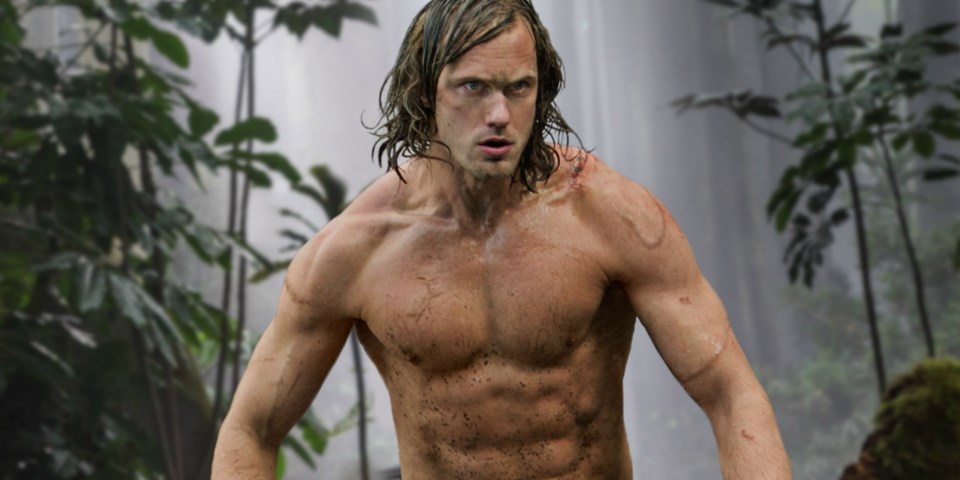If the Tarzan you remember is accompanied by the strains of a Phil Collins song, it’s definitely time to brush up on your bush man.��
Before the sanitized 1999 Disney version, former Olympic swimmer Johnny Weissmuller went through his share of loincloths, churning out a dozen Tarzan films in the 1930s and ’40s. In those pre-Second World War years, Tarzan battled the Nazis and visited New York with a variety of Janes, starting with Maureen O’Sullivan.��
It’s high time there was new blood to play the hero of 24 novels by Edgar Rice Burroughs, not to mention a contemporary context. Enter Alexander Skarsgard (of TV’s True Blood), playing, among other things, a Tarzan hell-bent on exposing slavery and slaughter in the so-called “dark continent” at the end of the 19th��century.
We touch on the traditional story in flashbacks, where Tarzan’s noble parents die/are killed and Tarzan (“white skin”) is raised by protective mother ape Kala. But the story really begins with a lately refined Tarzan living as nobleman John Clayton, Lord Greystoke, with his beloved Jane (Margot Robbie) in England.��
Tarzan receives word from George Washington Williams (Samuel L. Jackson), an African-American soldier living in the Congolese Basin, that Belgian colonists have instituted slavery and engaged in genocide. Tarzan reluctantly returns to the jungle accompanied by Jane, whereupon he meets Belgian envoy Leon Rom (Christoph Waltz), a bad guy in a white suit who kidnaps Jane in order to try to persuade Tarzan to bend to his colonial will. Plus there's a diamond deal in the offing, and Tarzan is part of the bloody package.
This is not a plot conceit but a historical truth:��before 1870 most of the African continent was ruled by indigenous queens and kings — less than 50 years later almost the entire continent was under white rule.��
Belgium’s King Leopold II (first cousin of England’s Queen Victoria, by the way) sent an invasion force and claimed the Congo Basin for himself, establishing the Congo Free State, which was anything but free. Great wealth was the goal and ivory and rubber were the exploited natural resources of the day. Village women were held hostage while the men were forced to tap the rubber trees deep in the jungle: the forced labour, resulting starvation and plummeting birth rate, caused the population of the Congo to crash from 20 million to 10 million in just 40 years.��
Williams and Tarzan team up to teach the native people (including Djimon Hounsou as Chief Mbonga) and the animals of the jungle how to fight back against their oppressors, while Jane plots her escape from Rom. Skarsgard is an able Tarzan, considering how far we’ve come since the “me Tarzan, you Jane” days. Jane is modernized, too: “I’m not your damsel,” she tells Captain Rom, when he politely asks her to scream for him.��
David Yates, director of the final four Harry Potter films is at the helm of this sobering partially-true story shot in England and Gabon. He coaxes decent performances out of his lead actors but as this is a holiday-weekend blockbuster, the vine-riding, wildebeest stampeding, man-and-beast battling is of paramount importance. The action, overall, is swingingly satisfying, considering the jungle creatures are all computer generated. And if you happen to do a little historical research on George Washington Williams or the Butcher of the Congo after the film’s call-of-the-jungle cry dies down, so much the better.��
��
The Legend of Tarzan opens Thursday at Scotiabank and Marine Gateway.



